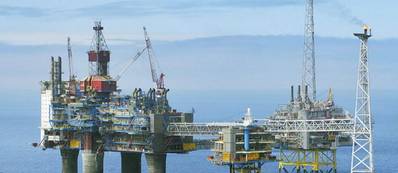This year, the offshore oil and gas industry has had to come to terms with the worst downturn for more than a decade. With commodity prices plummeting to an 11-year low in December, market research and consulting firm Douglas-Westwood (DW) reflects on the year gone by and considers the outlook for the year to come.
Offshore rig markets still have a lot to digest before recovery. Rig dayrates have plummeted as a function of significant oversupply. Many of these rigs were ordered in the previous up-cycle, but have only recently entered the fleet at a time when the appetite to drill is poor. The number of offshore oil and gas discoveries made in 2015 dropped by 60 percent and 45 percent when compared to 2013 and 2014 respectively. The market for newbuilds has evaporated, and, such is the extent of the oversupply, rates are unlikely to recover any time soon and rig owners around the world will continue to defer the delivery of new rigs and consider scrappage of noncompetitive units.
A backlog of subsea orders has supported high levels of offshore installation activity in 2015 – for example, major pipelines such as Ichthys and Polarled were installed this year. Subsea installation activities in West Africa and Latin America have also continued to thrive due to Petrobras’ commitment to deepwater production – all despite considerable financial constraints. Large deepwater developments such as Total’s Egina field and Shell’s continued development of the Bonga field are highlights among capital-intensive projects offshore West Africa in 2015.
However, it is important to note that backlogs are falling rapidly – only a few projects have been sanctioned this year. Of these, notable examples of fields receiving Final Investment Decisions over the past year include Statoil’s Johan Sverdrup field, Shell’s Appomattox field and BP’s Shah Deniz Phase 2 subsea development. DW believes subsea installation activity is yet to bottom out, with current backlog disguising the reality of the industry. A decline of at least 15 percent is forecast in global subsea tree installations next year.
This undeniably bleak assessment should be tempered with acknowledgement that, while it is often hard to be positive in the depths of a downturn, current oil price levels are not sustainable. So when should we expect a recovery? Most industry observers expect that the supply overhang that has suppressed prices through 2015 will linger well into 2016. However, there are signs that the supply / demand gap may start to narrow toward the end of next year. The latest IEA Oil Market Report projects that oil demand will increase by 1.2 mmbbl/d in 2016, while DW’s most recent Drilling & Production analysis highlights net additions of only 250 kbbl/d.
There is reason to see the light at the end of the tunnel, DW said, but we should expect that it might take time to reach it.













